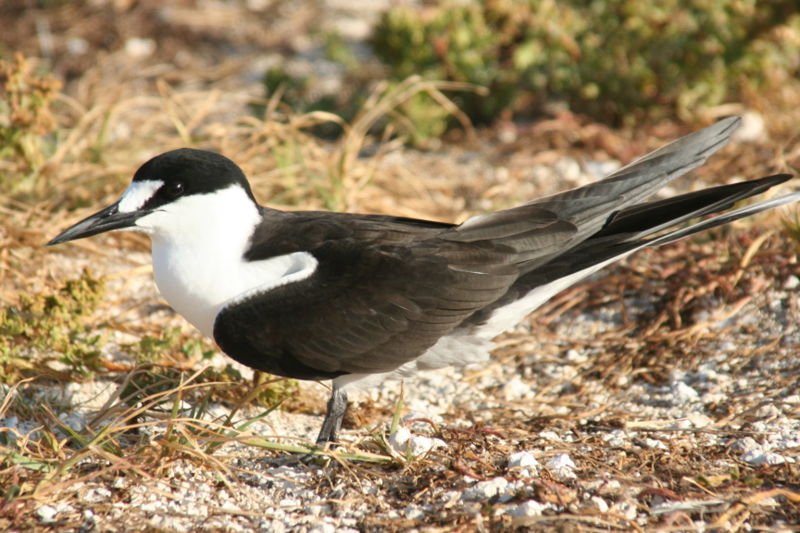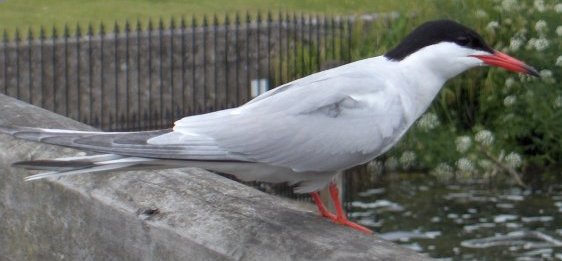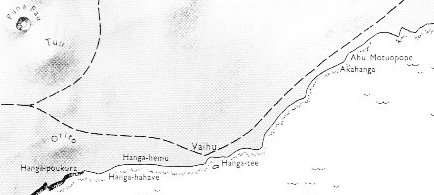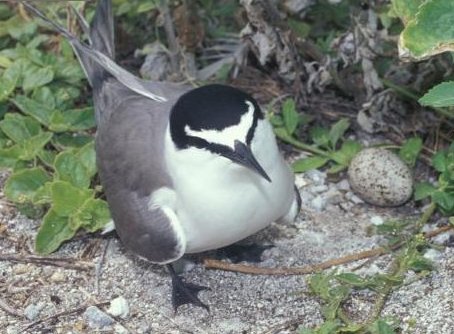Robert Graves in his
tremendous book 'The White Goddess' explains the meaning
of the lapwing:
"The Greeks
called the lapwing polyplagtos, 'luring on
deceitfully', and had a proverbial phrase 'more
beseechful than a lapwing' which they used for artful
beggars.
In Wales as
a boy I learned to respect the lapwing for the wonderful
way in which she camouflages and conceals her eggs in an
open field from any casual passer-by.
At first I
was fooled every time by her agonized peewit,
peewit, screemed from the contrary direction to the
one in which her eggs lay, and sometimes when she
realized that I was a nest-robber, she would flap about
around the ground, pretending to have a broken wing and
inviting capture.
But as soon
as I had found one nest I could find many. The lapwing's
poetic meaning is 'Disguise the Secret' and it is her
extraordinary discretion which gives her the claim for
sanctity.
According to
the Koran she was the repository of King
Solomon's secrets and the most intelligent of the flock
of prophetic birds that attended him."
I recalled the prominent
role of the lapwing in Graves' book when reading in
English Etymology that a plover (as in the Golden Plover
at water's edge) also was called lapwing.
Maybe the deceit (which
certainly is signified by the appearance of this golden
bird in the story about Kui and Fakataha)
lies in the suggestion that canoes should be straight
and not crooked?
On the other hand, if
canoes should be crooked - and if everybody knew that -
we should not be tricked into believing that was the
reason for the appearance of the lapwing.
I believe there are deeper
secrets in the story (as in all true myths) and that the
search for truth may take us a very far.
The method to unravel such
secrets is to slowly wade through the bushes looking
everywhere.
In Q we saw that the
creator (maybe) compensated for the disappearance of one
(canoe) glyph
(as compared to P) by adding a new glyph immediately
before his canoe:
I guess that the two GD64 (rau
hei) glyphs in Q probably correspond to the two
canoes, one rau hei for each canoe. We have
established that tapa mea in A shows a canoe and
we also know that the sun made his voyage in (or like) a
canoe across the sky.
Therefore I believe that in
Sunday Hb9-19 has a meaning
similar to the two rau hei glyphs in Q:
 |
 |
 |
 |
 |
|
Hb9-17 |
Hb9-18 |
Hb9-19 |
Hb9-20 |
Hb9-21 |
Hb9-20 (manu
rere) appears before moe (Hb9-21)
presumably to show how the young phase (swift and
hungry) will be followed by a more drowsy and satisfied
phase later on in life.
Hb9-18
is a sun canoe - I believe - but the order between rau
hei and canoe is opposite to the one in Q above. For
the moment I
have no explanation for that.
The name Fakataka is
worth investigating. Faka- clearly is equivalent
to the common Polynesian haka- meaning 'doing'
etc. At the opposite end of the word -taka give
us many alternatives to chose among:
| Taka
Taka,
takataka. Circle; to form
circles, to gather, to get together (of people). Vanaga.
1. A dredge. P Mgv.:
akataka, to fish all day or all night with the line, to throw
the fishing line here and there. This can only apply to some sort of net
used in fishing. We find in Samoa ta'ā
a small fishing line, Tonga taka the short line attached to fish
hooks, Futuna taka-taka a fishing party of women in the reef
pools (net), Maori takā the thread by which the fishhook is
fastened to the line, Hawaii kaa in the same sense, Marquesas
takako a badly spun thread, Mangareva takara a thread for
fastening the bait on the hook. 2. Ruddy. 3. Wheel, arch; takataka,
ball, spherical, round, circle, oval, to roll in a circle, wheel,
circular piece of wood, around; miro takataka, bush; haga
takataka, to disjoin; hakatakataka, to round, to concentrate.
P Pau.: fakatakataka, to whirl around. Mq.: taka, to gird.
Ta.: taa, circular piece which connects the frame of a house.
Churchill.
Takai, a curl, to tie;
takaikai, to lace up; takaitakai, to coil. P Pau.:
takai, a ball, to tie. Mgv.: takai, a circle, ring, hoop, to
go around a thing. Mq.: takai, to voyage around. Ta.: taai,
to make into a ball, to attach. Churchill. |
As usual in a
situation with many alternatives I let my subconsious do the job of picking out
the right threads. I feel is that the meaning in
some way must be 'circle' and 'tie together' (both
meanings at once).
In
particular I notice the Tahitian: 'circular piece which
connects the frame of a house'. Given my point of
departure for translating the rongorongo texts,
i.e. three axioms in the form of calendars (day, week,
month), everything connected with 'houses' ('doors',
'beams', 'thresholds' etc) must draw attention. The
'houses' are the dwellings of the 'planets', i.e. where
they are 'residing' (noho).
'There is a
couple residing in one place named Kui and
Fakataka' = E i ei te tahi ulugaalī nae nonofo
i te tahi fenua, ko Kui ma Fakataka.
In the
middle of the night and in the middle of the dark season
of the year one period will end and another will start.
At that point there must be somebody who ties the ends
of the branches together to make a circle, Fakataka.
The circle
in question presumably is the cycle of the sun. We
notice that one of the meanings of taka is ruddy.
"Ruddy
… red, reddish, orig. of the face ..." (English
Etymology)
The lapwing indicates the
place of birth (at water's edge). Therefore that must
also be the place where the tying together is 'bound to
happen'. In the sacred geography of Easter Island we
must be close to Rano Kau.
| Rano
Volcano; crater and lake of a volcano; i-agataiahi
i-hopu-ai i te rano, yesterday I bathed in the lake of the volcano.
Vanaga.
In Nuclear Polynesian the sense is specialized, the
waters of birth being recorded in Samoa and Futuna, and in every case
the word refers to the rinsing off of sea water. To wash away the salt
water is not only for appearance sake in the tropical Pacific. The sea
has a high degree of salinity and the salt crystals are not only the
clearly visible signs of an unkempt habit when they glisten upon the
brown skins, but they are uncomfortable as well. This use stamps upon
lanu a sense in which the fact that it is fresh water is more
prominent than the water sense. Churchill 2. |
| Kau 1. To
move one's feet (walking or swimming); ana oho koe, ana kau i te
va'e, ka rava a me'e mo kai, if you go and move your feet, you'll
get something to eat; kakau (or also kaukau), move
yourself swimming. 2. To spread (of plants): ku-kau-áte kumara,
the sweet potatoes have spread, have grown a lot. 3. To swarm, to mill
around (of people): ku-kau-á te gagata i mu'a i tou hare, there's
a crowd of people milling about in front of your house. 4. To flood (of
water after the rain): ku-kau-á te vai haho, the water has
flooded out (of a container such as a taheta). 5. To increase, to
multiply: ku-kau-á te moa, the chickens have multiplied. 6. Wide,
large: Rano Kau, "Wide Crater" (name of the volcano in the
southwest corner of the island). 7. Expression of admiration:
kau-ké-ké! how big! hare kau-kéké! what a big house!
tagata hakari kau-kéké! what a stout man! Vanaga.
To bathe, to swim; hakakau, to make to swim. P
Pau., Mgv., Mq.: kau, to swim. Ta.: áu, id. Kauhaga,
swimming. Churchill. |
The
explanation (according to Vanaga) of Rano Kau as
the Wide Crater is misleading. The primary meaning must
instead be connected with life and death, freshwater
after saltwater.
To spread wide (of plants), to swarm (of
people), to flood (of fresh water), to multiply (of
chickens) are meanings which lead further on to 'wide'
and 'expression of admiration'.
We have learnt in school that alpha and omega stand for
the beginning and the end, but that they somehow are
close together anyhow. Why they are close together is
usually not explained. But if we bend the string of
letters around to make a circle we will understand.
In Robert Graves' quest for understanding he arrives at
identifying the lapwing with A:
"Day of the Winter Solstice - A -
aidhircleóg, lapwing; alad, piebald.
Why is the Lapwing at the head of the
vowels?
Not hard to answer. It is a reminder that
the secrets of the Beth-Luis-Nion [the ABC of the
pre-latin Ogham alphabet] must be hidden by deception
and equivocation, as the lapwing hides her eggs. And
Piebald is the colour of this mid-winter season when
wise men keep to their chimney-corners, which are black
with soot inside and outside white with snow; and of the
Goddess of Life-in-Death and Death-in-Life, whose
prophetic bird is the piebald magpie."
I guess Robert Graves here is acting as a lapwing himself.
The explanation of why the other bird - Piebald - is at
winter solstice is obviously evasive.
As I remember it he every day used to read about old
meanings of words. So what does piebald mean?
"piebald ... of two colours
mingled, esp. white and black ... f. PIE1 +
BALD (in the sense 'streaked with white' ..."
"pie1 ... MAGPIE ... L.
pīca magpie,
rel. to pīcus green
woodpecker, and Skr. pikás Indian cuckoo, and
referred by some to IE. *(s)pl- be pointed ..."
"magpie
... common European bird, Pica caudata, noted for
its noisy chatter and pilfering habits ... f.
Mag,
pet-form of Margaret
+ PIE1 ... Earlier (dial.)
maggot-pie
... f. Maggot
- (O)F. Margot,
pet-form of Marguerite
Margaret ..." (English Etymology)
Black with white streaks, a crooked bird (pilfering
habits) and ultimately with a meaning (according to
'some') 'to be pointed'. That closes the case; we can identify the
magpie on Easter Island with manu
tara.
| Manu tara Sooty tern. The names of the age levels of the sooty tern were
earlier used as children's names (Routledge). These names were
(Barthel): pi(u) riuriu, kava 'eo'eo, te verovero,
and ka 'ara'ara. Fischer. |
| Tara 1. Thorn: tara miro. 2. Spur: tara moa. 3. Corner;
te tara o te hare, corner of house; tara o te ahu, corner of
ahu. Vanaga.
(1. Dollar; moni tara, id.) 2. Thorn,
spike, horn; taratara, prickly, rough, full of rocks. 3. To
announce, to proclaim, to promulgate, to call, to slander; tatara,
to make a genealogy. Churchill |
The 'corner of the house' should refer to a cardinal
point. The eggs of the lapwing, I guess, are located at
the three islets outside Orongo. There they stole
the first manu tara egg of the season (as if
mimicking the pilferous magpie).
The month March was called Tara Hau,
and that 'points' at autumn equinox rather than at
winter solstice. Tara Hau corresponds to the two
last 'regular' stations of the kuhane of Hau
Maka: 23 Peke Tau O Hiti and 24 Mauga Hau
Epa.
Uruga.
Prophetic vision. It is said that, not long before the
first missionaries' coming a certain Rega Varevare a
Te Niu saw their arrival in a vision and travelled
all over the island to tell it: He-oho-mai ko Rega
Varevare a Te Niu mai Poike, he mimiro i te po ka-variró
te kaiga he-kî i taana uruga, he ragi: "E-tomo te haûti
i Tarakiu, e-tomo te poepoe hiku regorego, e-tomo
te îka ariga koreva, e-tomo te poporo haha, e-kiu te
Atua i te ragi". I te otea o te rua raá he-tu'u-hakaou
ki Poike; i te ahi mo-kirokiro he-mate. Rega Varevare,
son of Te Niu, came from Poike, and toured
the island proclaiming his vision: "A wooden house will
arrive at Tarakiu (near Vaihú), a barge
will arrive, animals will arrive with the faces of eels
(i.e. horses), golden thistles will come, and the Lord
will be heard in heaven". The next morning he arrived
back in Poike, and in the evening when it was
getting dark, he died. Vanaga.
At Tara-kiu a 'wooden house', 'haûti',
(like a barge) will arrive with new strange people on
board.
| Haúti
Word used in the 19th century for "house," borrowed from English
("house" > haúti). Large houses built in the European style were
then called hare haúti. Vanaga. |
'... The ancient names of the month were: Tua haro,
Tehetu'upú, Tarahao, Vaitu nui, Vaitu poru, He
Maro, He Anakena, Hora iti, Hora nui, Tagaroa uri, Ko
Ruti, Ko Koró ...'
Let us return to the two birds, lapwing and piebald. In Barthel
2 (Manuscript E) we can read that when Hotu Matua
sailed away to Easter Island he brought birds with him:
We have come a long
way astray from the glyphs for the night time in H. But one rule
when making a quest is to do just that, not to focus too hard
but instead to follow the signs.
A
kind of superstructure is slowly taking form in front of us. We
cannot understand the phases of time-space without understanding
the echoes and reflections in birds, plants, stars etc. Not only
do the different fundamental cycles of time-space reflect on
each other (moon getting light from the sun and returning it
etc), but also do the cycles of time-space take on colour from
the events of nature.
This
interwoven-ness of the cosmos must be very resistant to changes.
Therefore it becomes understandable that the big lightly
coloured king of cats (Leo) remains through the ages, and
that his opposite the water jar (Aquarius) also must
remain. At spring equinox life is returning from the salty sea and at
water's edge ('in the freshwater pools on the reef') birth is evident from omens of birds.
Moving across the equator events
have to change places - summer becomes winter and winter becomes
summer. Spring becomes autumn and autumn becomes spring.
Spica at autumn equinox moves to spring equinox, and tara appears there too.








